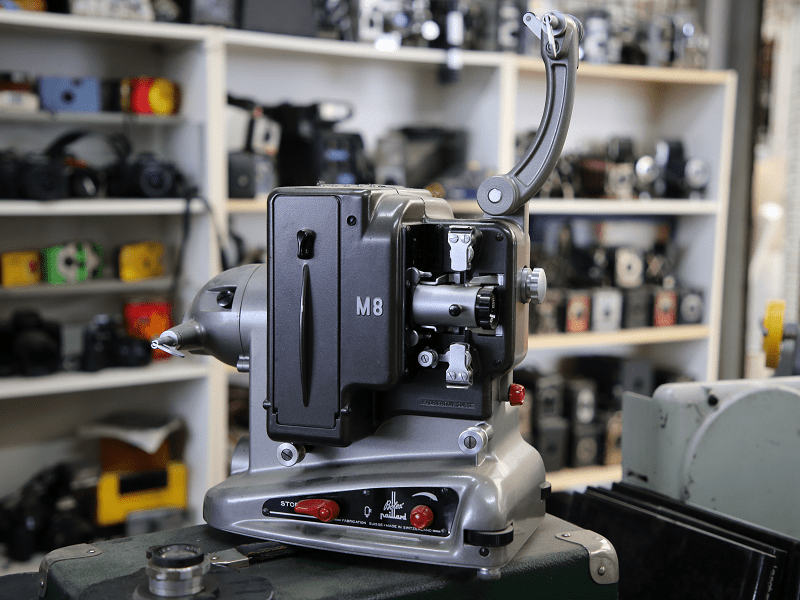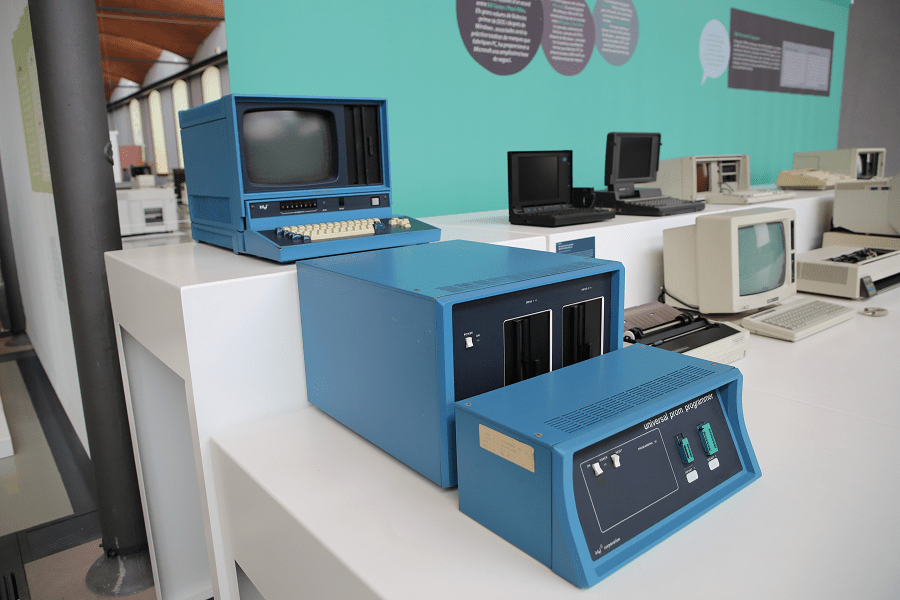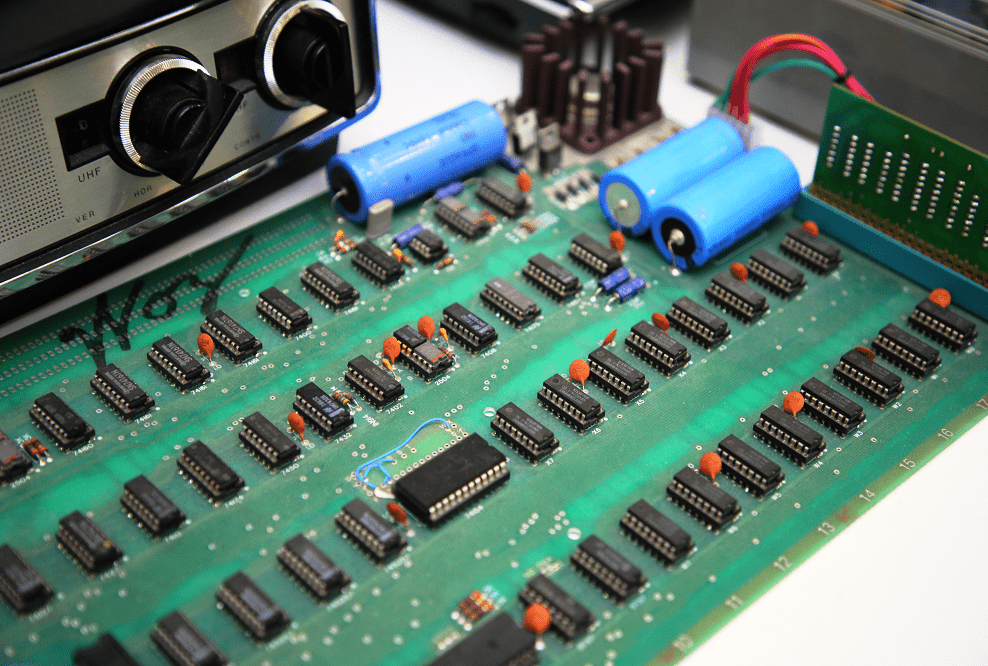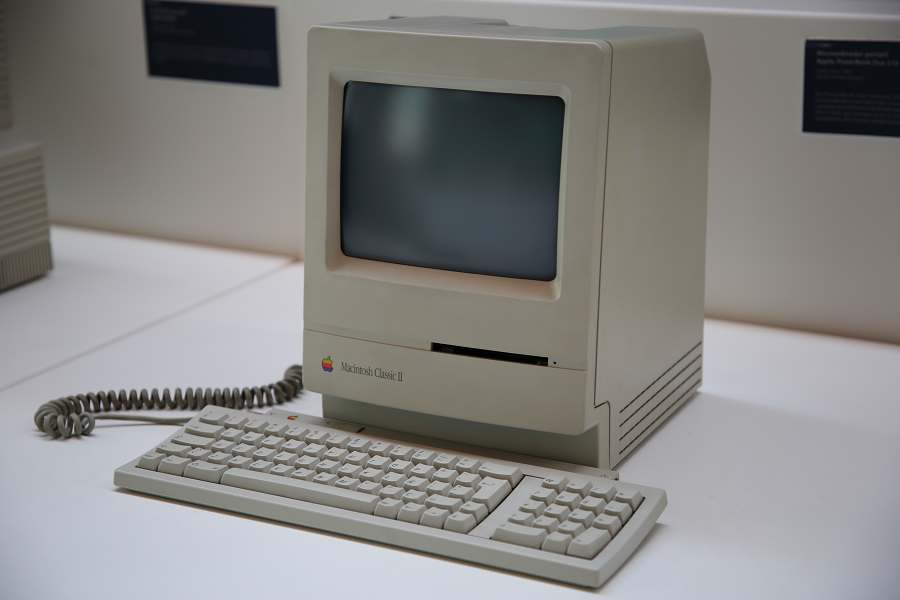The Swiss Bolex Paillard M8 Projector from 1950
OVERALL DIMENSIONS: 13″ x 6″ x 12″ (arm retracted, without reels)
WEIGHT: 12 lbs (17 1/2 lbs with carrying case and accessories)
CONSTRUCTION: Cast aluminum and steel. Painted with olive enamel finish on early models; Grey/silver finish on later models
REEL CAPACITY: Reel arms accommodate 400 ft reels. Upper reel arm folds downward and locks for storage; Serves as a carrying handle
THREADING: Rapid snap threading attaches film to sprockets; Lens assembly pivots outward for easy loading and unloading. Automatic loop former maintains the bottom loop even on damaged film
POWER: Runs on 110-120v, 50-60 cycle AC or DC power supply
LAMP: 110v 500 watt prefocus bulb. Modern replacement: CZX bulb
LENS: Interchangeable lenses; Usually supplied with a Kern 20mm f/1.6. Later models were supplied with a Kern 20mm f/1.3 lens
VARIABLE SPEED: 16 frames per second; adjustable for slower or faster speed. Motor or manual rewind. An audible warning device signals if the projection rate drops below safe limit.
Bolex International S. A. is a Swiss manufacturer of motion picture cameras based in Yverdon located in Canton of Vaud, the most notable products of which are in the 16 mm and Super 16 mm formats. Originally Bol, the company was founded in 1925 by Charles Haccius and Jacques Bogopolsky (aka Bolsey or Boolsky), the company’s name having been derived from Bogopolsky’s name.
In 1923 he presented the Cinégraphe Bol at the Geneva fair, a reversible apparatus for taking, printing, and projecting pictures on 35 mm. film. He later designed a camera for Alpa of Ballaigues in the late 1930s.
Bolex was bought by Paillard & Cie for 350,000 Swiss francs and Jacques Bogopolsky was hired as consulting engineer for five years. Soon Paillard realized that the cameras and projectors were not in fact the exceptional products promised by their partners, and after two years Jacque Bogopolsky was no longer welcome in Sainte-Croix.
Paillard-Bolex cameras were much used by adventurers, artists, as well as nature films, documentaries, and are still favoured by many animators. Over the years, notable Bolex users and owners include: Steven Spielberg, Ridley Scott, Andy Warhol, Peter Jackson, Jonas Mekas, Jean-Luc Godard, Antoine de Saint-Exupéry, James Dean, David Lynch, Marilyn Monroe, Edmund Hillary, and Mahatma Gandhi.
While some later models are electrically powered, the majority of those manufactured since the 1930s use a spring-wound clockwork power system. The 16 mm spring-wound Bolex is a popular introductory camera in film schools.











